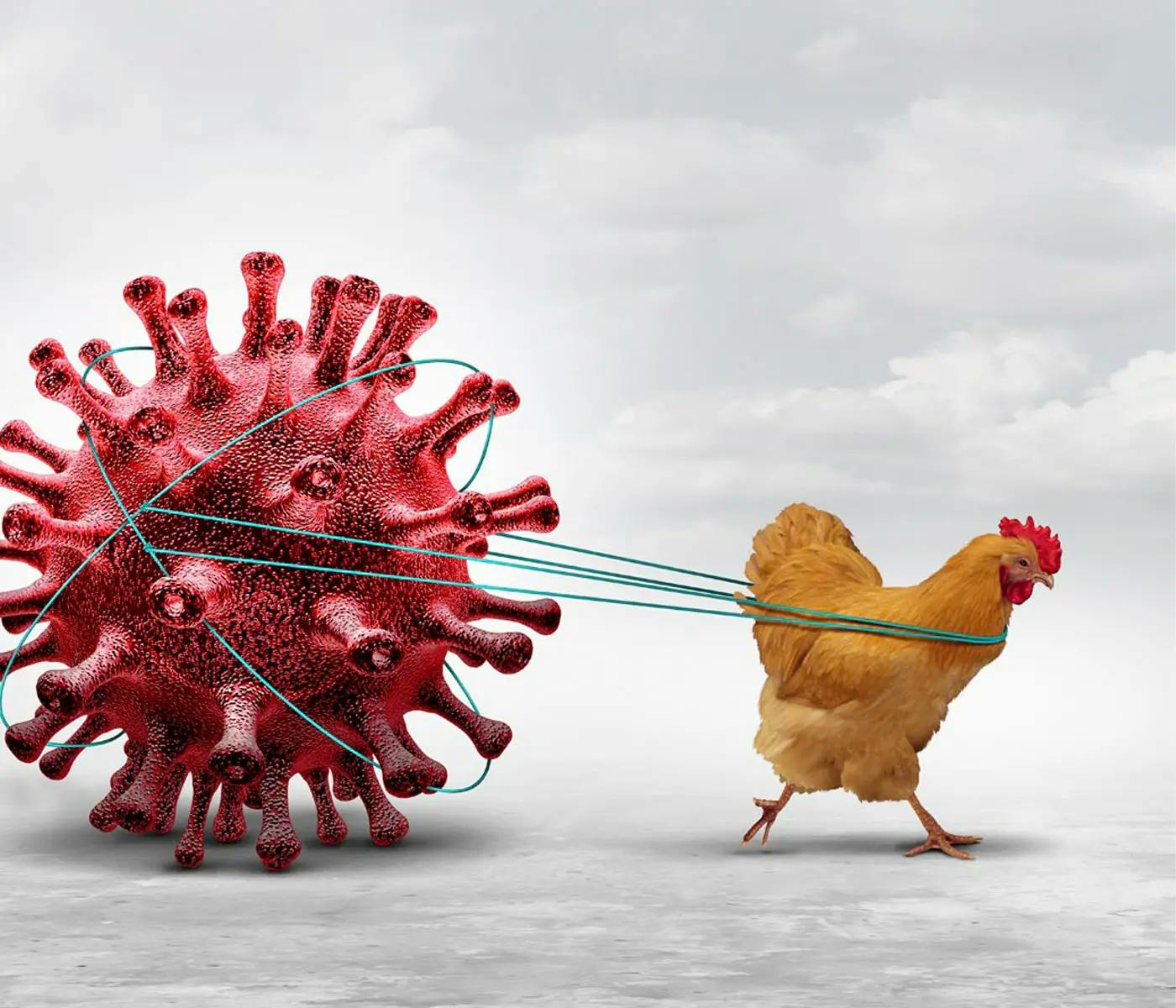
In 1878 a respiratory disease causing high mortality in poultry was first described as Fowl Plague. In 1955 an influenza virus was isolated as the cause of Fowl Plague or avian influenza. This article provides a few facts about Avian Influenza and provides links to more detailed information on this destructive disease.
Avian Influenza in Poultry
Introduction
Avian Influenza (AI) is a contagious viral infection that can affect all species of birds. In intensive poultry rearing systems, young fattening turkeys and laying hens are usually the most affected species.
Free-living birds may carry influenza viruses without becoming ill due to natural resistance. Wild waterfowl, in particular, serve as natural reservoirs for these viruses and can introduce infection into domestic poultry populations.
Causative Agent
The virus causing avian influenza is an Influenzavirus A virus of the family Orthomyxoviridae. It has several subtypes based on antigenic relationships in the virus glycoproteins haemagglutinin (H) and neuraminidase (N). Some subtypes cause highly pathogenic avian influenza (HPAI) with mortality rates as high as 100%, while others cause low pathogenic avian influenza (LPAI) with milder symptoms.
Clinical Symptoms
HPAI in poultry presents with depression, loss of appetite, cessation of egg laying, nervous signs, and respiratory symptoms. Mortality rates can be very high, depending on the virus subtype and environmental factors. LPAI primarily manifests as mild respiratory disease, depression, and reduced egg production.
Transmission and Spread
Wild birds, especially waterfowl, are the primary carriers of AI viruses. Direct contact is not always necessary for virus introduction; contaminated faeces and surface water can spread the infection. Human activities, such as farm visits and movement of birds, also contribute to spread.
Control Measures
HPAI is classified as a "list A" disease by the O.I.E, necessitating strict control measures. Infected poultry must be culled, and contaminated materials must be safely disposed of. Vaccination may be used as a supplement to control measures, especially for LPAI.
Potential Threat to Human Health
While most avian influenza viruses do not readily infect humans, some subtypes have caused human infections. Surveillance and disease control efforts are crucial to prevent human outbreaks.
For more detailed information on Avian Influenza, visit Avian-Influenza.com.
Source: Avian-Influenza.com - January 2005
